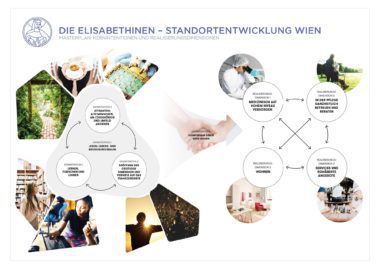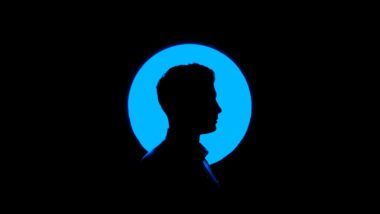Authors: Markus F. Peschl, Thomas Fundneider
Image: Susan Wilkinson
Put yourself in the following situation for a moment. You have arrived at the end of an innovation process or a design thinking workshop, you clap your hands, and the smile on your face shows the other participants the success of this creative process.
But ask yourself, how often has an unspoken feeling crept up on you that the outcome of this process was somehow unsatisfactory or shallow? How often have you admitted this to yourself or to others?
You worked hard, went through a series of creative exercises, tried to find the best of your ideas, wrote them down on colorful sticky notes, arranged and rearranged them. Yet somehow you could not see the “wow,” the surprising effect. You missed the radical novelty, or you were not really convinced that there was a clear purpose that would serve potential future user needs. On the contrary, the “great ideas” trickle away like sand over the next few weeks.
Why does a traditional view of creativity limit our innovation potential?
In this article, we want to get to the root of the problem and discuss why classic approaches to creativity, creativity techniques, out-of-the-box thinking, or design-thinking exercises reach their limits when it comes to purposefully shaping the future with radical innovation.
We will show that we need to fundamentally change our understanding of creativity and innovation to overcome these limitations. While this blog post will address more theoretical issues and develop an alternative perspective on innovation and creativity, a second post will present applicable innovation skills and mindsets that enable such an approach.
Returning to our experience described in the first paragraph, we would like to express a word of relief. It is not your fault if the results of such an innovation process did not convince you and did not meet your expectations in terms of novelty and usefulness.
As we will see in a moment, this is due to the methods and processes used; more specifically, it is due to the assumptions about creativity and innovation on which they are based and how these assumptions are implicitly materialized in these methods.

Two key assumptions about creativity
Generally speaking, the starting point for any innovation is some kind of creative act. In the classical perspective, the innovator comes up with an idea or new knowledge that solves a stated problem, adapts an existing solution, or satisfies a user need.
To be an innovation, this idea must be implemented as an innovation artifact, such as a novel product or service, technology, or therapy, and proven in the marketplace. In this blog post, we want to focus on the first part of this process, the so-called front end of innovation: the conception and development of a creative idea.
If you reflect on your personal experience in this area, you may find that the classic approach to creativity and the creation of novelty is based on two assumptions.
The first assumption is that novelty results from the recombination of existing entities or knowledge. In other words, most innovation comes from taking existing concepts, combining them with other concepts, or transferring them to a different context. Think of SUVs, meat substitutes, or LED light bulbs.
This results in innovations that are mostly incremental, they optimize or adapt existing solutions, they are problem solving by nature, they are “more of the same”. The degree of novelty is rather limited, because they are just reconfigurations of existing things, which are to a large extent already known and expected.
We need to be aware that no matter how hard we try to think out of the box, the way our brains work keeps us prisoners in our thought boxes and mental categories. Insights from neuroscience and cognitive science tell us that our brain follows a predictive dynamic, projecting its own knowledge onto the world rather than being open to novelty and unexpected phenomena. This is called the predictive mind approach in cognitive science. Have you ever managed to leave behind your existing thought patterns and come up with something completely new just by thinking?
The second assumption is that these recombined novel ideas are then inscribed into reality through the innovator’s behavior and the use of tools. In other words, the world is transformed according to these ideas, without really taking into account and respecting what reality is actually about and wants to “tell” the creative mind.
In many cases, this leads to innovations that do not fit the world, the market, or the user’s needs, and generally lack a real purpose. As an example, think of the zillions of completely useless and dumb apps for smartphones that only aim to hijack our attention and steal our life and personal data.
So, if classic creativity techniques or design thinking approaches tend to perform poorly in the context of radical or future-oriented innovation for the reasons discussed above, what are the alternatives? How can we break out of this vicious cycle of constrained creativity? What needs to change in our understanding and processes of innovation and creativity?
What the world can teach us about radical novelty and the future
We now invite you to reflect on and challenge your assumptions about innovation and creativity. More specifically, we propose to challenge the assumption that the environment plays a rather passive role in such processes.
What does this mean? As we have seen, the classical approach assumes that innovation is created by imposing an idea on the world and transforming it according to the creator’s preconceived notion. We propose to challenge this notion that the source of novelty lies only in the mind of the innovator and their ability to recombine existing mental representations into a creative or novel idea.
Instead of projecting our own ideas onto the world and imposing them on it, we propose to adopt the perspective of a creator interacting and engaging with his environment, as suggested by the enactive approach in cognitive science. Consider your own creative process. Isn’t it through active engagement with the world that you try to make sense of it and discover new possibilities that inspire you, rather than just thinking about the world abstractly?

Who is the author of innovations?
What do we mean by “engaging with the world”? As a first approximation, it might mean doing ethnographic user research or observing some properties or functionalities of a phenomenon, as suggested by user-centered design approaches, for example.
Although important, we should be careful not to reduce engagement with the world to these kinds of activities, as they are only part of the story. They do not go far enough because they do not really reveal what is potentially radically new. They remain stuck in the classical logic of projecting our own creative ideas or expectations onto the world, and do not take into account the full range of future possibilities that might emerge.
What we need is a complete change of attitude. Instead of clinging to our own ideas, we need to transform our assumptions about creativity and adopt an attitude of radical openness. First, we need to recognize that the source of novelty is no longer exclusively in the mind of the innovator, but is to be found “out there” in the world.
We need to rethink the role of the environment. It no longer passively receives new forms according to the creator’s ideas, but takes an active role in the process of creating novelty. Thus, there is a reversal of creative agency or authorship, as the source of novelty lies mostly in the environment rather than in the mind of the creative person.
This means that innovation and creativity become something that a person undergoes rather than does. We must turn our attention to an emerging world by opening up and submitting to uncertainty and the yet unknown.
We do not think primarily about innovation, but we think with and through the material things in the world by actively engaging with and creating them. Instead of predicting and testing variations and recombinations of already known solutions to a given problem, the focus shifts to what we do not predict, to what is not yet known, and to the creation of new niches.
This leads to a new understanding of the innovation process, in which we affect the world while being affected by it, in a circular way that intertwines discovery and making. This is achieved by creating novelty through active engagement with the world. Creative agency means that novelty is brought forth by the dynamics of the world, complemented by our creative interventions that respect and facilitate what wants to emerge.
Potentials point into the future and lead the way
Engaging with the world also means focusing on future possibilities rather than on existing phenomena and transforming them through creativity techniques or out-of-the-box thinking exercises.
Instead of projecting our own ideas onto the world, it is necessary to become sensitive to what wants to emerge in an unfolding reality. This introduces a radical future orientation into innovation processes. Since potentials always point to the future, to what is “not yet” and what is in the process of becoming, we can no longer rely on knowledge from the past, but must shift to a mindset of openness to the future. We need to acquire what is called “future literacy” and “future skills”. We will discuss these in the next blog post.
In conclusion, in such a future-oriented perspective of innovation, both the creator and the created undergo transformation (and transform each other) in a reciprocal process of responding by being responsive.
Novelty manifests itself in the form of a novel unity between the innovator and his environment by realizing their respective future potentials. As a metaphor, think of a couple, the creator and his environment, dancing together. Although they are separate, they form a unity by corresponding and responding to each other’s movements, bringing to life new patterns that could not be found in the individual systems involved.
This requires not only a new set of skills and attitudes, but a form of personal transformation. At the same time, these issues and topics are usually not taught in traditional innovation education.
Would you like to stay up-to-date on new approaches to radical innovation that you can apply in your organization? Subscribe to our newsletter below.
Subscribe to Our Newsletter
Keep your innovative edge with more stories like this and additional reading tips, muses, and project updates.


